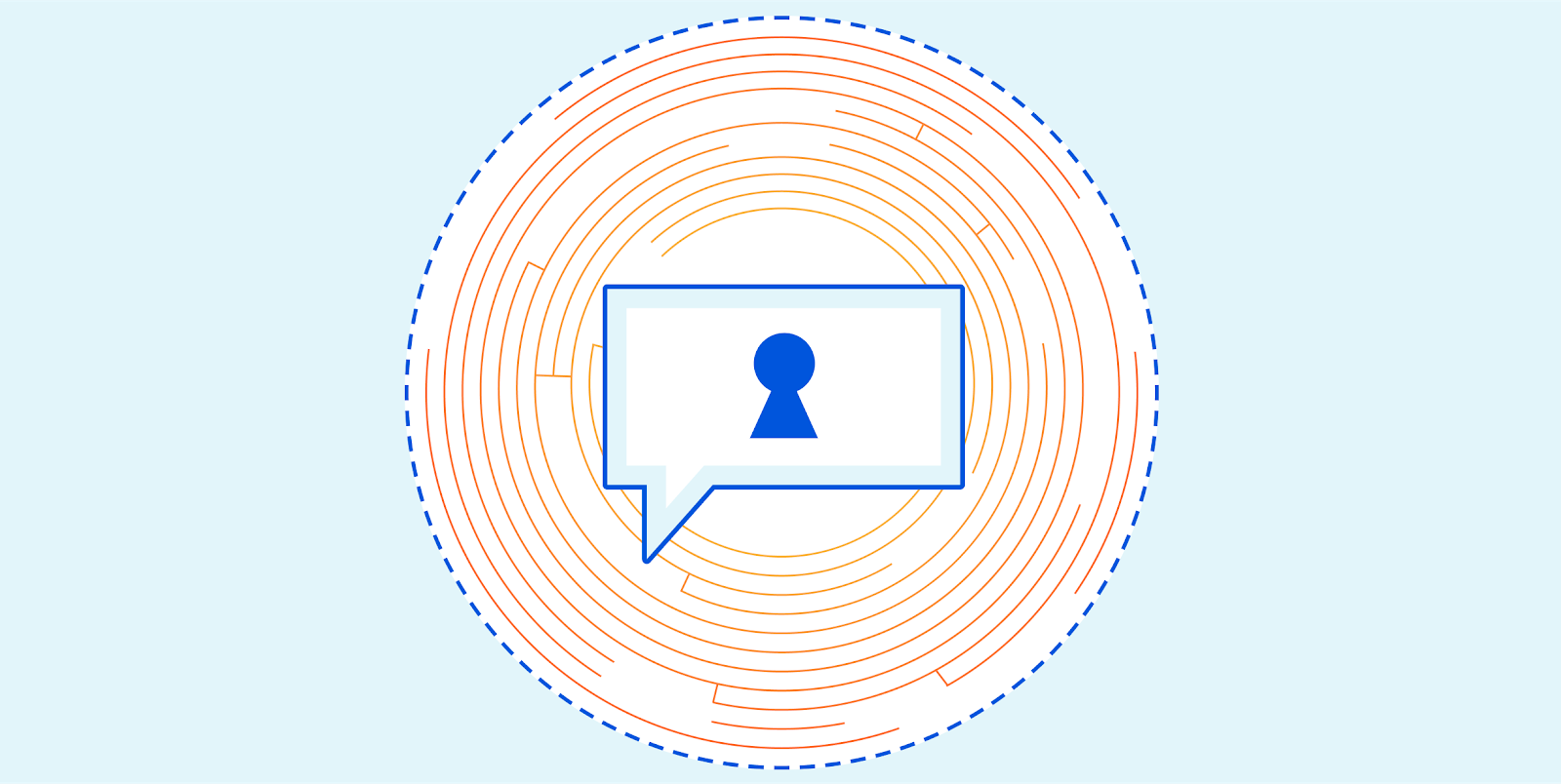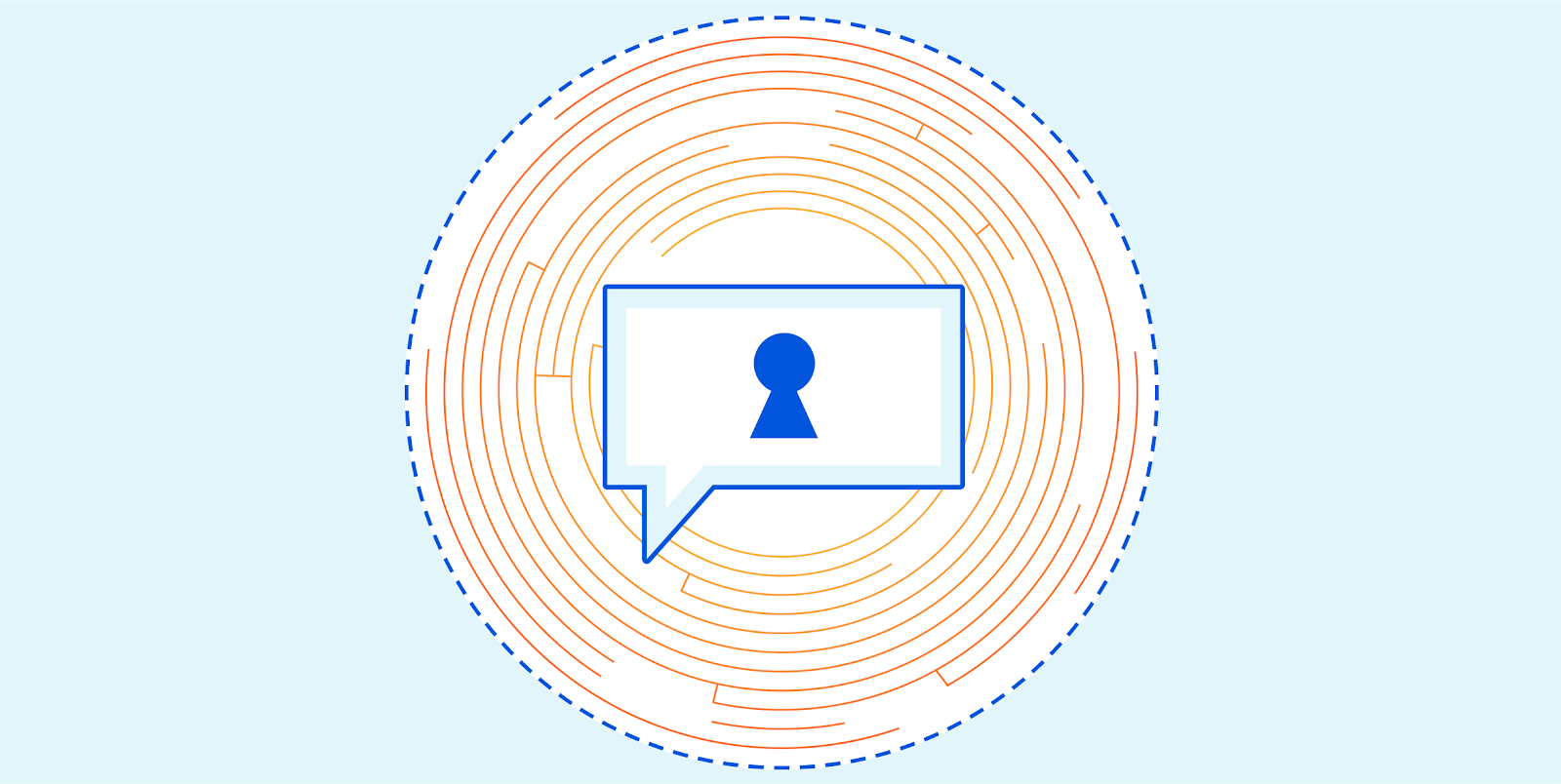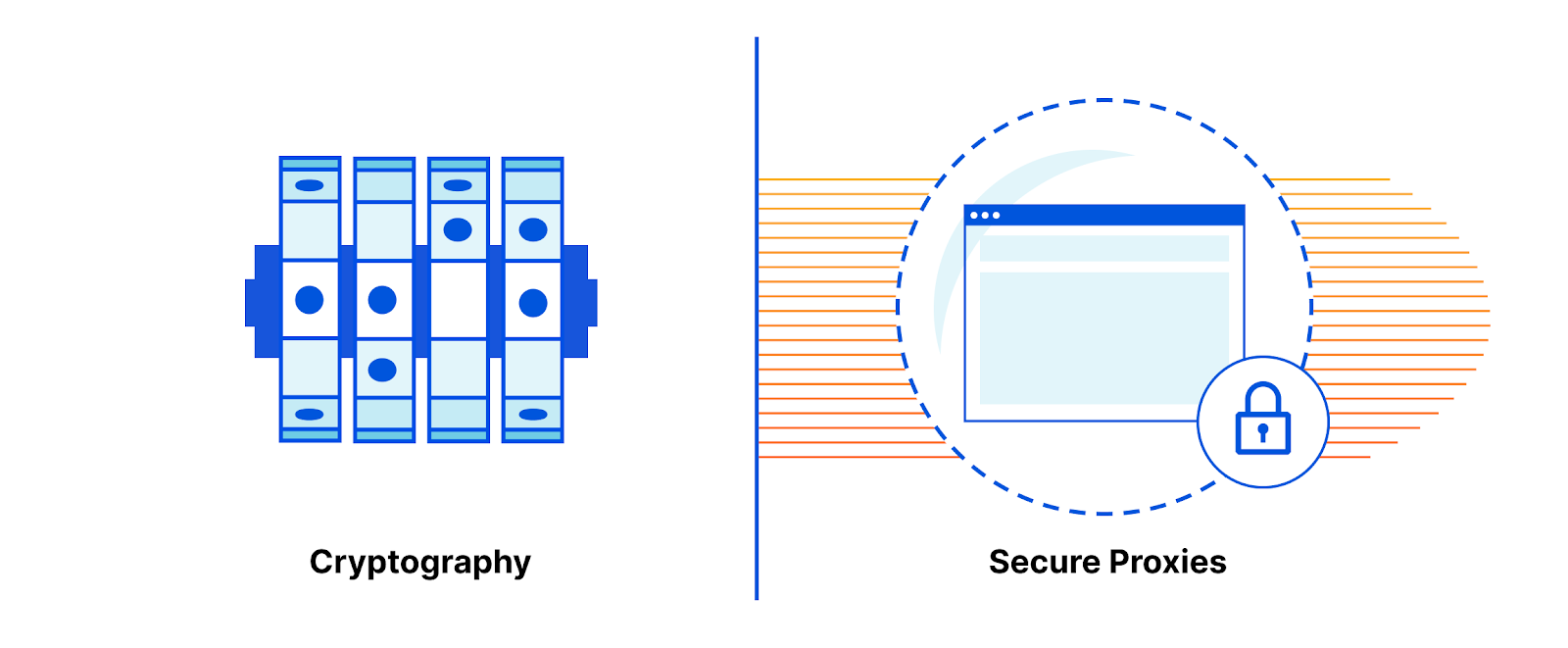Post Syndicated from Nick Sullivan original https://blog.cloudflare.com/next-generation-privacy-protocols/


Over the last ten years, Cloudflare has become an important part of Internet infrastructure, powering websites, APIs, and web services to help make them more secure and efficient. The Internet is growing in terms of its capacity and the number of people using it and evolving in terms of its design and functionality. As a player in the Internet ecosystem, Cloudflare has a responsibility to help the Internet grow in a way that respects and provides value for its users. Today, we’re making several announcements around improving Internet protocols with respect to something important to our customers and Internet users worldwide: privacy.
These initiatives are:
- Fixing one of the last information leaks in HTTPS through Encrypted Client Hello (ECH), previously known as Encrypted SNI
- Making DNS even more private by supporting Oblivious DNS-over-HTTPS (ODoH)
- Developing a superior protocol for password authentication, OPAQUE, that makes password breaches less likely to occur
Each of these projects impacts an aspect of the Internet that influences our online lives and digital footprints. Whether we know it or not, there is a lot of private information about us and our lives floating around online. This is something we can help fix.
For over a year, we have been working through standards bodies like the IETF and partnering with the biggest names in Internet technology (including Mozilla, Google, Equinix, and more) to design, deploy, and test these new privacy-preserving protocols at Internet scale. Each of these three protocols touches on a critical aspect of our online lives, and we expect them to help make real improvements to privacy online as they gain adoption.
A continuing tradition at Cloudflare
One of Cloudflare’s core missions is to support and develop technology that helps build a better Internet. As an industry, we’ve made exceptional progress in making the Internet more secure and robust. Cloudflare is proud to have played a part in this progress through multiple initiatives over the years.
Here are a few highlights:
- Universal SSL™. We’ve been one of the driving forces for encrypting the web. We launched Universal SSL in 2014 to give website encryption to our customers for free and have actively been working along with certificate authorities like Let’s Encrypt, web browsers, and website operators to help remove mixed content. Before Universal SSL launched to give all Cloudflare customers HTTPS for free, only 30% of connections to websites were encrypted. Through the industry’s efforts, that number is now 80% — and a much more significant proportion of overall Internet traffic. Along with doing our part to encrypt the web, we have supported the Certificate Transparency project via Nimbus and Merkle Town, which has improved accountability for the certificate ecosystem HTTPS relies on for trust.
- TLS 1.3 and QUIC. We’ve also been a proponent of upgrading existing security protocols. Take Transport Layer Security (TLS), the underlying protocol that secures HTTPS. Cloudflare engineers helped contribute to the design of TLS 1.3, the latest version of the standard, and in 2016 we launched support for an early version of the protocol. This early deployment helped lead to improvements to the final version of the protocol. TLS 1.3 is now the most widely used encryption protocol on the web and a vital component of the emerging QUIC standard, of which we were also early adopters.
- Securing Routing, Naming, and Time. We’ve made major efforts to help secure other critical components of the Internet. Our efforts to help secure Internet routing through our RPKI toolkit, measurement studies, and “Is BGP Safe Yet” tool have significantly improved the Internet’s resilience against disruptive route leaks. Our time service (time.cloudflare.com) has helped keep people’s clocks in sync with more secure protocols like NTS and Roughtime. We’ve also made DNS more secure by supporting DNS-over-HTTPS and DNS-over-TLS in 1.1.1.1 at launch, along with one-click DNSSEC in our authoritative DNS service and registrar.
Continuing to improve the security of the systems of trust online is critical to the Internet’s growth. However, there is a more fundamental principle at play: respect. The infrastructure underlying the Internet should be designed to respect its users.
Building an Internet that respects users
When you sign in to a specific website or service with a privacy policy, you know what that site is expected to do with your data. It’s explicit. There is no such visibility to the users when it comes to the operators of the Internet itself. You may have an agreement with your Internet Service Provider (ISP) and the site you’re visiting, but it’s doubtful that you even know which networks your data is traversing. Most people don’t have a concept of the Internet beyond what they see on their screen, so it’s hard to imagine that people would accept or even understand what a privacy policy from a transit wholesaler or an inspection middlebox would even mean.
Without encryption, Internet browsing information is implicitly shared with countless third parties online as information passes between networks. Without secure routing, users’ traffic can be hijacked and disrupted. Without privacy-preserving protocols, users’ online life is not as private as they would think or expect. The infrastructure of the Internet wasn’t built in a way that reflects their expectations.


The good news is that the Internet is continuously evolving. One of the groups that help guide that evolution is the Internet Architecture Board (IAB). The IAB provides architectural oversight to the Internet Engineering Task Force (IETF), the Internet’s main standard-setting body. The IAB recently published RFC 8890, which states that individual end-users should be prioritized when designing Internet protocols. It says that if there’s a conflict between the interests of end-users and the interest of service providers, corporations, or governments, IETF decisions should favor end users. One of the prime interests of end-users is the right to privacy, and the IAB published RFC 6973 to indicate how Internet protocols should take privacy into account.
Today’s technical blog posts are about improvements to the Internet designed to respect user privacy. Privacy is a complex topic that spans multiple disciplines, so it’s essential to clarify what we mean by “improving privacy.” We are specifically talking about changing the protocols that handle privacy-sensitive information exposed “on-the-wire” and modifying them so that this data is exposed to fewer parties. This data continues to exist. It’s just no longer available or visible to third parties without building a mechanism to collect it at a higher layer of the Internet stack, the application layer. These changes go beyond website encryption; they go deep into the design of the systems that are foundational to making the Internet what it is.
The toolbox: cryptography and secure proxies
Two tools for making sure data can be used without being seen are cryptography and secure proxies.

Cryptography allows information to be transformed into a format that a very limited number of people (those with the key) can understand. Some describe cryptography as a tool that transforms data security problems into key management problems. This is a humorous but fair description. Cryptography makes it easier to reason about privacy because only key holders can view data.
Another tool for protecting access to data is isolation/segmentation. By physically limiting which parties have access to information, you effectively build privacy walls. A popular architecture is to rely on policy-aware proxies to pass data from one place to another. Such proxies can be configured to strip sensitive data or block data transfers between parties according to what the privacy policy says.
Both these tools are useful individually, but they can be even more effective if combined. Onion routing (the cryptographic technique underlying Tor) is one example of how proxies and encryption can be used in tandem to enforce strong privacy. Broadly, if party A wants to send data to party B, they can encrypt the data with party B’s key and encrypt the metadata with a proxy’s key and send it to the proxy.
Platforms and services built on top of the Internet can build in consent systems, like privacy policies presented through user interfaces. The infrastructure of the Internet relies on layers of underlying protocols. Because these layers of the Internet are so far below where the user interacts with them, it’s almost impossible to build a concept of user consent. In order to respect users and protect them from privacy issues, the protocols that glue the Internet together should be designed with privacy enabled by default.
Data vs. metadata
The transition from a mostly unencrypted web to an encrypted web has done a lot for end-user privacy. For example, the “coffeeshop stalker” is no longer an issue for most sites. When accessing the majority of sites online, users are no longer broadcasting every aspect of their web browsing experience (search queries, browser versions, authentication cookies, etc.) over the Internet for any participant on the path to see. Suppose a site is configured correctly to use HTTPS. In that case, users can be confident their data is secure from onlookers and reaches only the intended party because their connections are both encrypted and authenticated.
However, HTTPS only protects the content of web requests. Even if you only browse sites over HTTPS, that doesn’t mean that your browsing patterns are private. This is because HTTPS fails to encrypt a critical aspect of the exchange: the metadata. When you make a phone call, the metadata is the phone number, not the call’s contents. Metadata is the data about the data.
To illustrate the difference and why it matters, here’s a diagram of what happens when you visit a website like an imageboard. Say you’re going to a specific page on that board (https://<imageboard>.com/room101/) that has specific embedded images hosted on <embarassing>.com.


The space inside the dotted line here represents the part of the Internet that your data needs to transit. They include your local area network or coffee shop, your ISP, an Internet transit provider, and it could be the network portion of the cloud provider that hosts the server. Users often don’t have a relationship with these entities or a contract to prevent these parties from doing anything with the user’s data. And even if those entities don’t look at the data, a well-placed observer intercepting Internet traffic could see anything sent unencrypted. It would be best if they just didn’t see it at all. In this example, the fact that the user visited <imageboard>.com can be seen by an observer, which is expected. However, though page content is encrypted, it’s possible to learn which specific page you’ve visited can be seen since <embarassing>.com is also visible.
It’s a general rule that if data is available to on-path parties on the Internet, some of these on-path parties will use this data. It’s also true that these on-path parties need some metadata in order to facilitate the transport of this data. This balance is explored in RFC 8558, which explains how protocols should be designed thoughtfully with respect to the balance between too much metadata (bad for privacy) and too little metadata (bad for operations).
In an ideal world, Internet protocols would be designed with the principle of least privilege. They would provide the minimum amount of information needed for the on-path parties (the pipes) to do the job of transporting the data to the right place and keep everything else confidential by default. Current protocols, including TLS 1.3 and QUIC, are important steps towards this ideal but fall short with respect to metadata privacy.
Knowing both who you are and what you do online can lead to profiling
Today’s announcements reflect two metadata protection levels: the first involves limiting the amount of metadata available to third-party observers (like ISPs). The second involves restricting the amount of metadata that users share with service providers themselves.
Hostnames are an example of metadata that needs to be protected from third-party observers, which DoH and ECH intend to do. However, it doesn’t make sense to hide the hostname from the site you’re visiting. It also doesn’t make sense to hide it from a directory service like DNS. A DNS server needs to know which hostname you’re resolving to resolve it for you!
A privacy issue arises when a service provider knows about both what sites you’re visiting and who you are. Individual websites do not have this dangerous combination of information (except in the case of third party cookies, which are going away soon in browsers), but DNS providers do. Thankfully, it’s not actually necessary for a DNS resolver to know *both* the hostname of the service you’re going to and which IP you’re coming from. Disentangling the two, which is the goal of ODoH, is good for privacy.
The Internet is part of ‘our’ Infrastructure
Roads should be well-paved, well lit, have accurate signage, and be optimally connected. They aren’t designed to stop a car based on who’s inside it. Nor should they be! Like transportation infrastructure, Internet infrastructure is responsible for getting data where it needs to go, not looking inside packets, and making judgments. But the Internet is made of computers and software, and software tends to be written to make decisions based on the data it has available to it.
Privacy-preserving protocols attempt to eliminate the temptation for infrastructure providers and others to peek inside and make decisions based on personal data. A non-privacy preserving protocol like HTTP keeps data and metadata, like passwords, IP addresses, and hostnames, as explicit parts of the data sent over the wire. The fact that they are explicit means that they are available to any observer to collect and act on. A protocol like HTTPS improves upon this by making some of the data (such as passwords and site content) invisible on the wire using encryption.
The three protocols we are exploring today extend this concept.
- ECH takes most of the unencrypted metadata in TLS (including the hostname) and encrypts it with a key that was fetched ahead of time.
- ODoH (a new variant of DoH co-designed by Apple, Cloudflare, and Fastly engineers) uses proxies and onion-like encryption to make the source of a DNS query invisible to the DNS resolver. This protects the user’s IP address when resolving hostnames.
- OPAQUE uses a new cryptographic technique to keep passwords hidden even from the server. Utilizing a construction called an Oblivious Pseudo-Random Function (as seen in Privacy Pass), the server does not learn the password; it only learns whether or not the user knows the password.
By making sure Internet infrastructure acts more like physical infrastructure, user privacy is more easily protected. The Internet is more private if private data can only be collected where the user has a chance to consent to its collection.
Doing it together
As much as we’re excited about working on new ways to make the Internet more private, innovation at a global scale doesn’t happen in a vacuum. Each of these projects is the output of a collaborative group of individuals working out in the open in organizations like the IETF and the IRTF. Protocols must come about through a consensus process that involves all the parties that make up the interconnected set of systems that power the Internet. From browser builders to cryptographers, from DNS operators to website administrators, this is truly a global team effort.
We also recognize that sweeping technical changes to the Internet will inevitably also impact the technical community. Adopting these new protocols may have legal and policy implications. We are actively working with governments and civil society groups to help educate them about the impact of these potential changes.
We’re looking forward to sharing our work today and hope that more interested parties join in developing these protocols. The projects we are announcing today were designed by experts from academia, industry, and hobbyists together and were built by engineers from Cloudflare Research (including the work of interns, which we will highlight) with everyone’s support Cloudflare.
If you’re interested in this type of work, we’re hiring!







